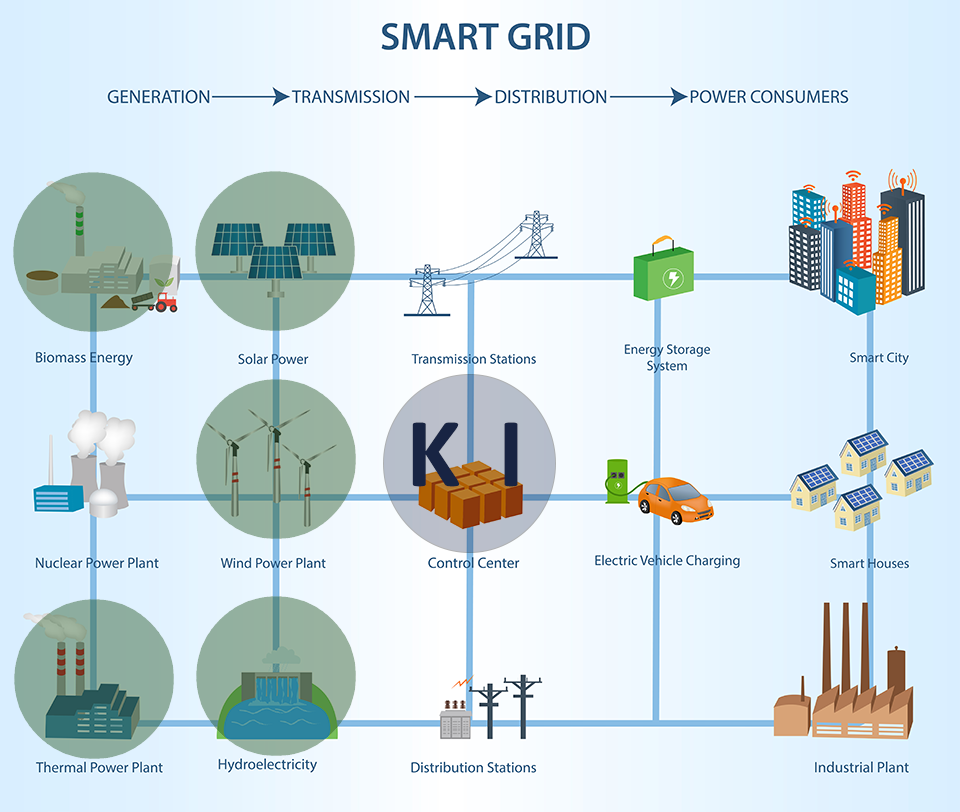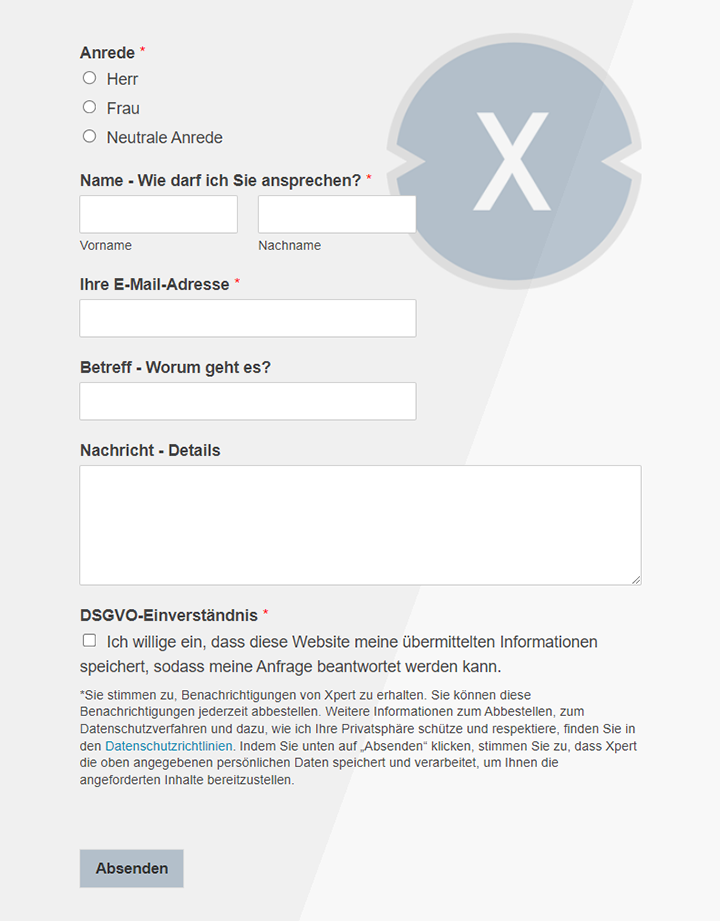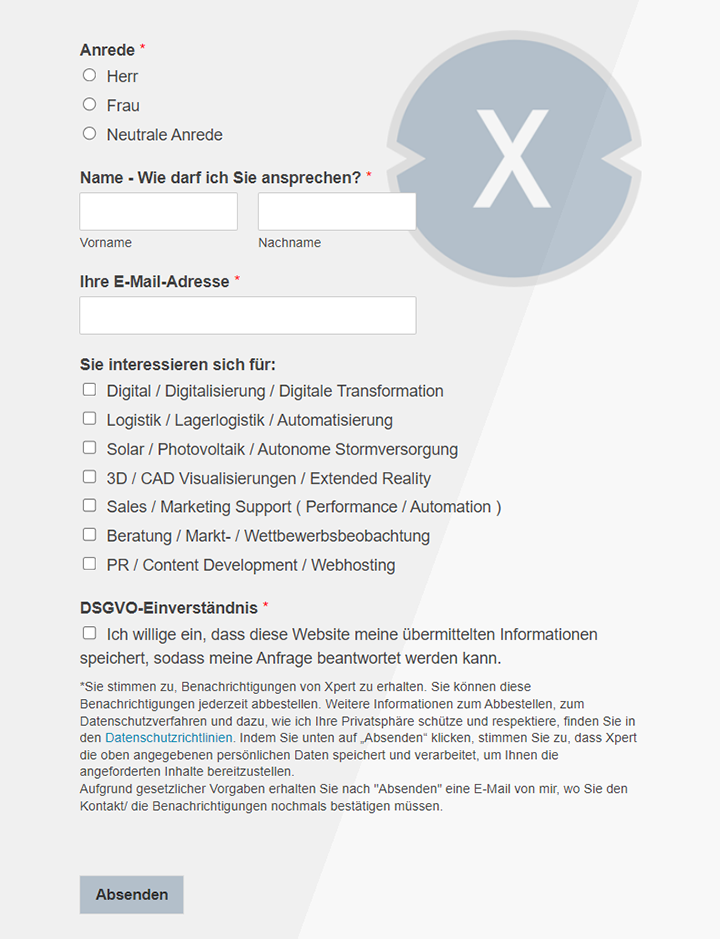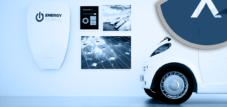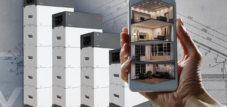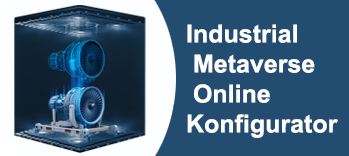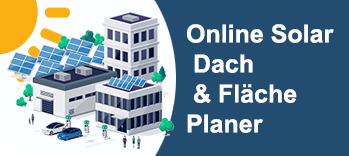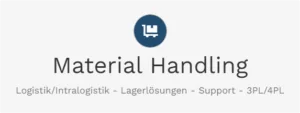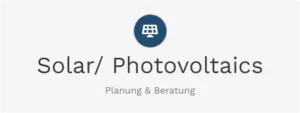PV & power storage: What are the advantages, disadvantages and differences between AC power storage and DC battery storage?
Language selection 📢
Published on: June 6, 2024 / update from: August 21, 2024 - Author: Konrad Wolfenstein
🌞🔋 Integration of PV power storage in photovoltaic systems: AC or DC storage? An analysis
🌟 Advantages and disadvantages of AC power storage and DC battery storage
✨ The integration of an electricity storage system into a photovoltaic system (PV system) represents an essential step towards increasing self-consumption and grid independence. The choice between an AC (alternating current) or DC (direct current) coupled storage system is crucial because Both technologies have different advantages and disadvantages. This article provides a detailed technical analysis of both systems to enable an informed decision.
🔄 AC-coupled power storage: Flexibility and easy integration
🌐 AC-coupled storage is characterized by its high flexibility. They are integrated into the building's AC circuit and are therefore independent of the PV system. This enables existing systems to be easily retrofitted as no adjustments to the PV inverter are required.
➡️ Advantages:
Easy installation and retrofitting
AC storage systems can be easily integrated into existing systems because they work independently of the PV system's inverter.
flexibility
They can be combined with various PV systems and inverters, giving you more freedom when selecting components.
Emergency power function
Many AC storage units offer an emergency power function that ensures the supply of important consumers during power outages.
Modularity
AC storage is often modular, allowing you to expand storage capacity as needed.
➡️ Disadvantages:
Lower efficiency
Due to the additional conversion from direct current to alternating current and back, losses occur that reduce the overall efficiency of the system.
Higher cost
AC storage is usually more expensive than comparable DC storage because it contains more components.
🔄 AC-coupled power storage: Flexibility and easy integration
🔋 DC power storage is directly connected to the direct current circuit of your PV system. This means that the solar power generated can be stored in the battery without any conversion losses. This means that DC storage achieves a higher level of efficiency than AC storage.
➡️ Advantages
Higher efficiency
The direct connection to the PV system eliminates the conversion losses from direct current to alternating current and back, which leads to higher efficiency.
Lower costs
DC storage is generally cheaper than comparable AC storage because it requires fewer components.
Compact design
DC storage is often more compact than AC storage, which saves space.
➡️ Disadvantages
Less flexibility
DC storage is less flexible than AC storage because it relies on compatibility with the PV system's inverter.
More complex installation
The installation of DC storage systems is usually more complex than AC storage systems because they have to be integrated directly into the DC circuit of the PV system.
Limited emergency power function
Not all DC storage devices offer an emergency power function, and if they do, it is often limited.
🔍 AC or DC power storage: Which technology is right for you?
🔍🔍 The decision for AC or DC power storage depends on your individual needs and priorities.
Choose AC power storage if:
- You would like to continue using your existing inverter.
- You value easy installation and retrofitting.
- You are looking for a flexible solution that is compatible with various PV systems and inverters.
- You need an emergency power function.
Choose DC power storage if:
- You install a new PV system and want to achieve the highest possible efficiency.
- You want to save costs.
- You prefer a compact solution.
🛠️ The right technology for your needs
🌟 Both AC and DC power storage systems have their place and offer specific advantages. Choosing the right technology depends on your individual needs and priorities. Get advice from a specialist to find the optimal solution for your photovoltaic system.
✅📌 Additional aspects
💡 Hybrid inverter
An interesting alternative are hybrid inverters that support both AC and DC coupled storage. They offer a high level of flexibility and can be expanded if necessary.
🚀 Future security
When choosing your electricity storage system, pay attention to future-proofing. Technology is evolving rapidly, and you want to make sure your storage continues to meet current standards years from now.
💶 Funding opportunities
Find out about possible funding programs for electricity storage. In many regions there are attractive subsidies that provide financial support for investing in storage.
🔚 Ultimately, the decision for AC or DC power storage is an individual consideration. Consider the advantages and disadvantages mentioned, your personal needs and seek advice from an expert to find the optimal solution for your photovoltaic system.
📣 Similar topics
- 🌞🔋 AC or DC power storage: Which is better for your PV system?
- ✅⚡ Efficient energy storage: Advantages and disadvantages of AC and DC storage
- 🌟🔌 Optimize PV systems: AC versus DC power storage in comparison
- 📊🏠 Grid independence through electricity storage: AC and DC systems under the microscope
- 💡🔋 The right choice: AC or DC power storage for your own consumption?
- 📌🔍 Technical analysis: Differences between AC and DC power storage
- 📈⚙️ Modularity and flexibility: Advantages of AC-coupled storage
- 🔧🌞 Greater efficiency: DC power storage and its advantages for PV systems
- 🛠️🔄 Setup and costs: AC and DC power storage in comparison
- 🔋✅ Emergency power functions: Advantages of AC battery storage during power outages
#️⃣ Hashtags: #energymanagement #photovoltaics #electricitystorage #gridindependence #sustainability
🎯🎯🎯 Benefit from Xpert.Digital's extensive, fivefold expertise in a comprehensive service package | R&D, XR, PR & SEM

AI & XR 3D Rendering Machine: Fivefold expertise from Xpert.Digital in a comprehensive service package, R&D XR, PR & SEM - Image: Xpert.Digital
Xpert.Digital has in-depth knowledge of various industries. This allows us to develop tailor-made strategies that are tailored precisely to the requirements and challenges of your specific market segment. By continually analyzing market trends and following industry developments, we can act with foresight and offer innovative solutions. Through the combination of experience and knowledge, we generate added value and give our customers a decisive competitive advantage.
More about it here:
🌐 Smart Grid: 🤖 Artificial intelligence in the field of renewable energies
While power grids with central power generation have dominated so far, the trend is towards decentralized generation systems. This applies to production from renewable sources such as photovoltaic systems, solar thermal power plants, wind turbines and biogas plants. This leads to a much more complex structure, primarily in the area of load control, voltage maintenance in the distribution network and maintaining network stability. In contrast to medium-sized to larger power plants, smaller, decentralized generation systems also feed directly into the lower voltage levels such as the low-voltage network or the medium-voltage network.
More about it here:
🌞🔋 Alternating current (AC) and direct current (DC) in photovoltaics
🔋🔄 The importance of AC and DC in photovoltaics: differences and applications
The terms alternating current (AC) and direct current (DC) play a central role in photovoltaics because they describe the way solar power is generated, converted and used. Understanding the differences between AC and DC is crucial for the planning, installation and operation of photovoltaic systems.
⚡⚙️ Direct current (DC): The basis of solar energy
Solar cells, the basic building blocks of solar modules, generate direct current. With direct current, electrons flow continuously in one direction, from one pole to the other. This direct current is generated directly by the solar cells when sunlight hits them, triggering a photoelectric effect. Direct current has some characteristic features:
1. Constant voltage
The voltage remains constant over time, allowing for predictability and stability in applications such as batteries and electronics.
2. Directionality
The electrical river always takes place in one direction, which means that a “+” and “-” page is defined.
3. Losses over long distances
A disadvantage of direct current is that it cannot be transmitted over long distances as efficiently as alternating current because the energy losses are higher.
In photovoltaics, the direct current generated by the solar panels is usually used for storage and later use in batteries before being converted into alternating current.
🔄💡 Alternating current (AC): The standard in the power grid
The power grid that supplies our homes and businesses uses alternating current. Unlike direct current, alternating current changes direction at regular intervals. In Germany, the frequency of alternating current is 50 Hertz (Hz), which means that the direction of the current flow changes 50 times per second. Alternating current has some key features:
1. Periodic voltage
The voltage periodically alternates between positive and negative, typically in the form of a sine wave.
2. Efficient transmission
Alternating current can be transmitted efficiently over long distances, making it ideal for the power grid.
3. Transformability
Using transformers, the voltage of alternating current can be easily adjusted to different values, making it easier to integrate into a wide range of applications.
🔧🏠 Why is alternating current standard in the power grid?
Alternating current has become established in the power grid because it can be transported over long distances more efficiently than direct current. Through the use of transformers, the voltage of alternating current can be easily increased or decreased, which is crucial for transmitting and distributing electricity over long distances. In addition, many electrical devices and machines are designed to run on alternating current.
🔌🔄 The role of the inverter in photovoltaics
Since solar modules generate direct current and the power grid requires alternating current, an inverter is an indispensable part of every grid-connected photovoltaic system. The inverter converts the direct current generated by the solar panels into alternating current, which can then be fed into the power grid or used in the home. An inverter takes on various tasks:
1. Maximum Power Point Tracking (MPPT)
This technology optimizes the power output of the solar panels by always determining the optimal operating point under varying lighting conditions.
2. Synchronization with the network
Inverters synchronize the alternating current generated with the power grid to ensure seamless feed-in.
3. Security features
They monitor the power quality and protect the system from overloads and fault currents.
🔗🔋 AC and DC coupled photovoltaic systems
Photovoltaic systems can be either AC or DC coupled, which refers to the way the inverter is integrated into the system.
AC-coupled systems
In AC-coupled systems, each inverter is connected to a group of solar panels called a string. Each inverter converts the direct current from its string into alternating current. This configuration is widely used and offers flexibility in system planning.
DC-coupled systems
In DC-coupled systems, all solar modules are connected to a central inverter. The direct current from all modules is collected and then converted into alternating current by the central inverter. This configuration can be more efficient, especially for large systems, as it requires fewer inverters.
🔄⚡ Hybrid inverter: The bridge between AC and DC
A more recent development in photovoltaics is hybrid inverters. These inverters can handle both direct current and alternating current, providing more flexibility when integrating battery storage and other components into the system. Hybrid inverters make it possible to both store the direct current generated by the solar panels and use the alternating current generated.
🔋🔄 AC and DC coupled battery storage
Battery storage can also be either AC or DC coupled.
AC coupled storage
These storage units are connected to the home's AC circuit and charge using the excess solar power converted into AC power by the inverter. They are easy to install and can also be retrofitted with existing photovoltaic systems.
DC-coupled storage
These storage devices are connected directly to the DC circuit of the solar modules and charge with the direct current before it is converted into alternating current by the inverter. They can be more efficient than AC-coupled storage because they avoid a conversion step.
🔍📈 Choosing the right technology
The decision for an AC or DC coupled photovoltaic system or battery storage depends on various factors, such as: B. the size of the system, the individual requirements and the budget. It is advisable to seek advice from a professional to find the optimal solution for your needs.
🚀🔆 Future trends in photovoltaics
Photovoltaic technology is constantly evolving, and there are some interesting trends that could shape the future of solar energy. This includes:
1. Increasing efficiency of solar cells
The efficiency of solar cells continues to increase, meaning more electricity can be generated from the same area.
2. New materials for solar cells
Researchers are working on new materials for solar cells that are cheaper and more efficient than traditional silicon.
3. Integration of photovoltaics into buildings
The integration of photovoltaics into roofs, facades and windows of buildings is becoming increasingly popular and enables seamless use of solar energy.
4. Intelligent power grids (smart grids)
Smart grids capable of monitoring and controlling the flow of electricity in real time will help optimize the integration of renewable energies such as photovoltaics.
Photovoltaics is a key technology for the energy transition and the transition to a sustainable energy supply. Understanding the differences between alternating current and direct current is an important step in realizing the full potential of solar energy.
📣 Similar topics
- 🌞🔋 Differences between alternating current (AC) and direct current (DC) in photovoltaics
- ☀️⚡ How AC and DC affect solar power generation
- 🌅📊 The role of direct current in solar systems
- 💡🔄 Why alternating current (AC) is standard in the power grid
- 🔋🔌 The inverter: the heart of every photovoltaic system
- 🌞🔗 AC and DC coupled photovoltaic systems in comparison
- 🌇🔋 Hybrid inverter: The bridge between AC and DC
- 📈💡 Future trends in solar energy: efficiency improvements and new materials
- 🏠🔋 Choosing the right battery storage: AC or DC coupled?
- 🔄⚡ Intelligent power grids and the integration of photovoltaics
#️⃣ Hashtags: #photovoltaics #alternating current #direct current #solar energy #energy efficiency
We are there for you - advice - planning - implementation - project management
☑️ Smart City & Factory: Industry expert for energetic 5G buildings and halls as well as advice and installation of solar systems
☑️ Xpert.Plus - logistics consulting and logistics optimization
☑️ Industry expert, here with his own Xpert.Digital Industry Hub with over 2,500 specialist articles
I would be happy to serve as your personal advisor.
You can contact me by filling out the contact form below or simply call me on +49 89 89 674 804 (Munich) .
I'm looking forward to our joint project.
Xpert.Digital - Konrad Wolfenstein
Xpert.Digital is a hub for industry with a focus on digitalization, mechanical engineering, logistics/intralogistics and photovoltaics.
With our 360° business development solution, we support well-known companies from new business to after sales.
Market intelligence, smarketing, marketing automation, content development, PR, mail campaigns, personalized social media and lead nurturing are part of our digital tools.
You can find out more at: www.xpert.digital - www.xpert.solar - www.xpert.plus




